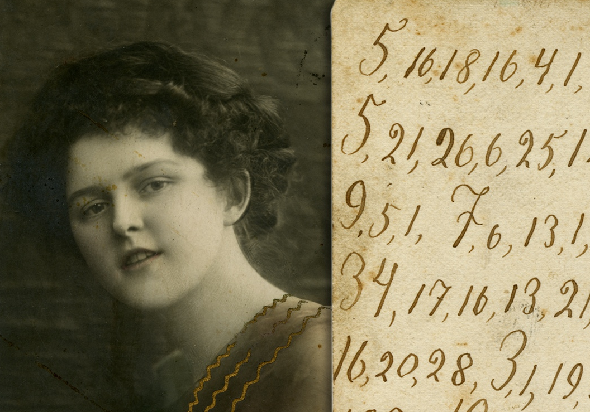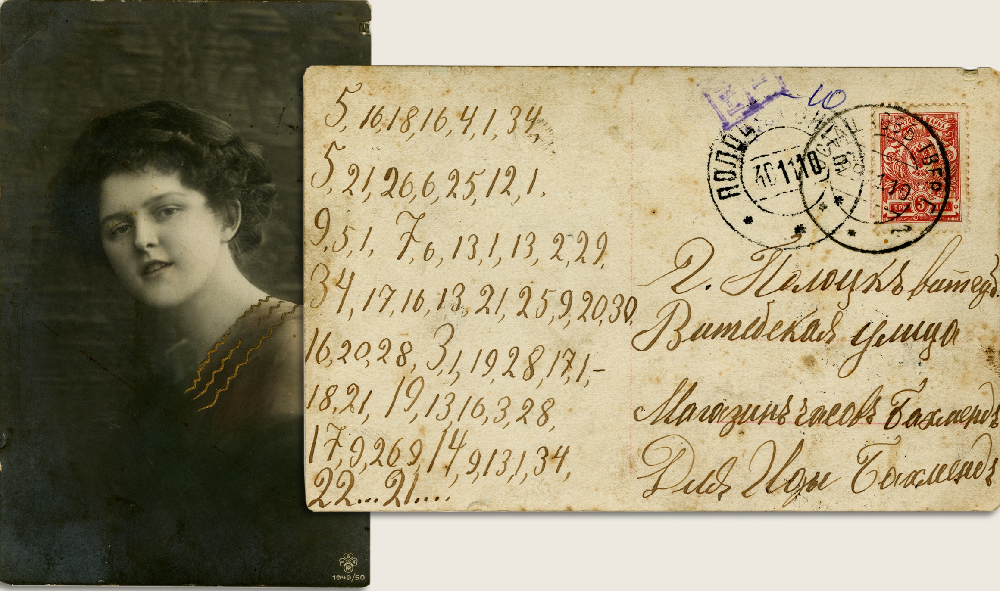A museum in Polotsk, Belarus, is struggling with an encrypted postcard. Can a reader help?
From time to time, I start a Google search for expressions such as “encrypted letter”, “enciphered document” or “diary in code”. To increase my chances of finding something interesting, I also use search terms in foreign languages I don’t speak – thanks to Deepl and Google Tanslate, this is not very difficult.
A Belarusian cryptogram
When I recently googled for the Russian translation of “encrypted postcard”, I found an article published on the Belarusian news portal Gorod 214 in May 2019. This report is about an encrypted postcard owned by a museum in Polotsk, Belarus (there seveal museums in this city; to my regret, I don’t know which one is meant here). Apparently, the museum staff couldn’t read the message and therefore asked the public for help. They even offered a reward for the decipherment.
The Gorod 214 article encourages readers to post the solution in the comment section, but nothing can be read there. Either nobody has submitted a comment or all the notes have been deleted.
Here’s a scan of both postcard sides:
Solution approaches
The address on the postcard is written in cyrillic letters. Can a reader read these lines a let us know name, street, and city of the recipient?
The stamp is hard to read, too. If I’m not wrong, the card was stamped in 1910.
The encryption itself is probably not very sophisticated. The message consists of words written with numbers between 1 and 34, which is consistent with a one-to-one replacement of the cyrillic alphabet. This means that we are probably dealing with a Belarusian substitution cipher.
Can a reader solve this mystery?
Follow @KlausSchmeh
Further reading: An encrypted postcard sent to Cognac, France
Linkedin: https://www.linkedin.com/groups/13501820
Facebook: https://www.facebook.com/groups/763282653806483/




Kommentare (11)